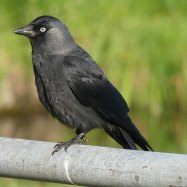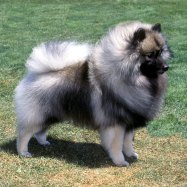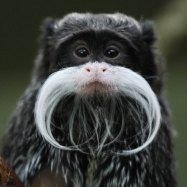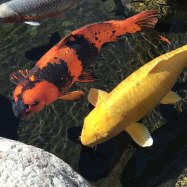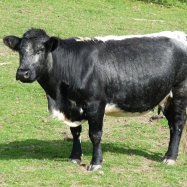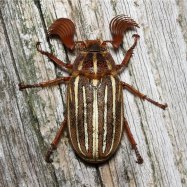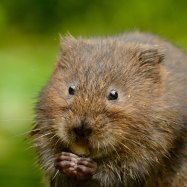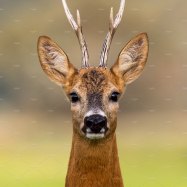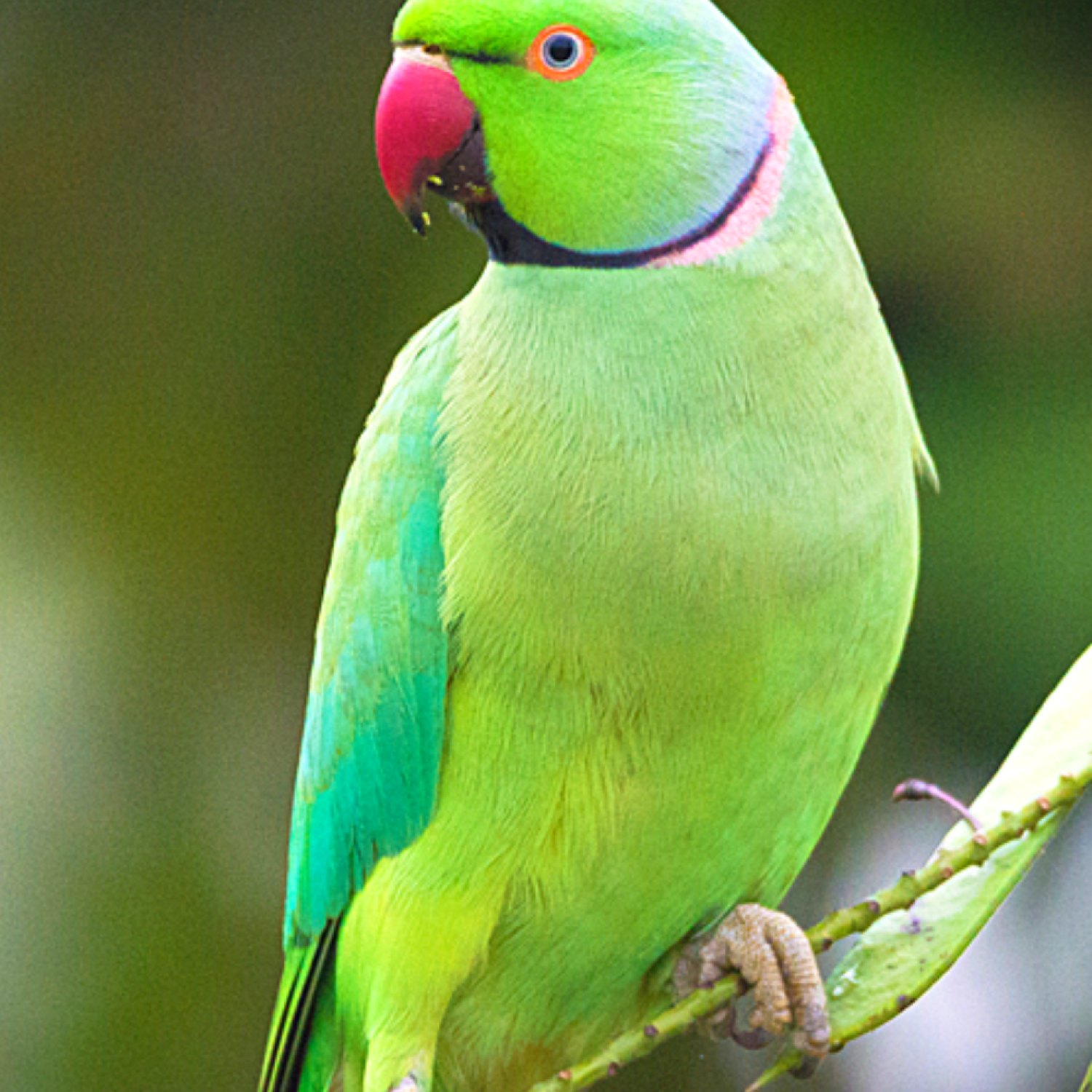
Parrot
Varies depending on the species, ranging from about 3.5 inches (8.9 cm) to 40 inches (100 cm)
Parrots are fascinating creatures with various sizes and vibrant colors. Ranging from 3.5 inches to 40 inches, these sturdy birds belong to the Psittacidae family. You can spot them in Australia, Brazil, Indonesia, Mexico, and the United States. Don't be surprised if they mimic your speech - they are excellent at imitating humans! #parrots #psittacidae #birdlovers
Animal Details Summary:
Common Name: Parrot
Kingdom: Animalia
Habitat: Tropical and subtropical rainforests, woodlands, savannas, and grasslands
The Fascinating World of Parrots: Colorful Birds with Incredible Intelligence
Parrots are unquestionably one of the most fascinating creatures on our planet. With their vibrant colors, incredible intelligence, and unique personalities, these birds have captured the hearts and minds of humans for centuries. From the jungles of the Amazon to the deserts of Australia, parrots can be found in various countries across the world, and their presence adds to the richness and diversity of our natural world.Scientifically known as Psittacidae, parrots belong to the family of birds with the same name Parrot. These birds, also commonly known as parrots, have been classified into 86 genera and 350 species that exhibit a remarkable range of colors and sizes. They belong to the Animalia kingdom, Chordata phylum, Aves class, Psittaciformes order, and Psittacidae family.
The habitat of parrots is incredibly diverse, as they can be found in tropical and subtropical rainforests, woodlands, savannas, and grasslands. Their feeding method is also versatile, as they are omnivorous, meaning they consume both plant and animal matter. These factors contribute to their widespread geographical distribution, with parrots being found in tropical and subtropical regions of the world.
Native to Australia, Asia, Central Africa, Central America, South America, and the Caribbean, parrots have made themselves at home in countries like Brazil, Indonesia, Mexico, and the United States. With over 350 species of parrots, each with unique characteristics and behaviors, these birds have captivated researchers and animal lovers alike.
One of the most striking features of parrots is their colorful appearance. Unlike other birds, parrots showcase a variety of vivid colors such as green, blue, red, and yellow, making them visually appealing to the human eye Papillon. This colorful display not only adds to their beauty but also serves a practical purpose in nature. For instance, parrots use their bright colors to attract mates, communicate within their flocks, and camouflage themselves in their natural habitat.
In terms of physical characteristics, parrots have a compact and sturdy body shape, with strong beaks and legs. They vary in length depending on their species, with some as small as 3.5 inches (8.9 cm) and others as long as 40 inches (100 cm). Their body shape and size make them well-suited for both flying and climbing, allowing them to navigate their surroundings with ease.
Apart from their physical appearance, parrots are also known for their remarkable intelligence. In fact, they are considered one of the most intelligent species of birds. Their intelligence is exhibited through their ability to mimic human speech and perform simple tasks such as solving puzzles and opening locks. This incredible trait has made them popular pets, but it is also crucial for their survival in the wild.
Parrots are known for their strong bonds and social behavior within their flocks. They have a complex communication system that includes both verbal and nonverbal cues. Besides their ability to mimic human speech, parrots use vocalizations, body language, and even facial expressions to communicate with one another. This high level of communication plays a crucial role in their social structure and survival.
Another interesting aspect of parrot behavior is their unique personalities. Each parrot has its own distinct personality, just like humans. They exhibit emotions such as happiness, sadness, and even jealousy, making them relatable and endearing creatures. Their strong bonds with their owners also contribute to their personalities, as they are known to form deep attachments with their human companions.
One of the most exciting aspects of parrot behavior is their use of tools. This display of intelligence and adaptability has been observed in some species of parrots, where they use sticks and other objects to reach food or manipulate their environment. This ability to use tools is considered a sign of advanced cognition and is a skill that is not commonly seen in other birds.
While parrots are known for their beauty, intelligence, and unique behavior, they also play a critical role in the ecosystem. As omnivores, they help maintain the balance of their natural habitat by dispersing seeds and pollinating flowers. They also control insect populations, which helps keep the ecosystem in check. This essential role makes them a vital part of the natural world.
However, despite their value in nature and their popularity as pets, parrots are facing numerous threats. One of the most significant threats to their survival is the illegal pet trade. Millions of parrots are taken from their natural habitats each year, leading to a decline in their population and disrupting their social structure. This practice not only harms these birds but also damages the ecosystems that rely on them.
Parrots are also facing habitat loss due to deforestation and human development. With their habitat being destroyed, they are struggling to find food, shelter, and suitable areas for breeding. This loss results in a decline in their population, making them vulnerable to extinction. To protect parrots and their habitats, it is essential to raise awareness and take necessary conservation measures.
Fortunately, there are organizations and initiatives dedicated to protecting parrots and their habitats. These efforts include establishing protected areas and implementing measures to regulate the illegal pet trade. Through these initiatives, we can help preserve the future of these magnificent birds and appreciate them in their natural habitat.
In conclusion, parrots are truly remarkable creatures that have captured our imagination for centuries. With their vibrant colors, incredible intelligence, and unique behaviors, they have become beloved animals and important members of the natural world. As we continue to learn more about these fascinating birds, it is essential to protect them and their habitats to ensure their survival for generations to come.

Parrot
Animal Details Parrot - Scientific Name: Psittacidae
- Category: Animals P
- Scientific Name: Psittacidae
- Common Name: Parrot
- Kingdom: Animalia
- Phylum: Chordata
- Class: Aves
- Order: Psittaciformes
- Family: Psittacidae
- Habitat: Tropical and subtropical rainforests, woodlands, savannas, and grasslands
- Feeding Method: Omnivorous
- Geographical Distribution: Found in tropical and subtropical regions of the world
- Country of Origin: Native to Australia, Asia, Central Africa, Central America, South America, and the Caribbean
- Location: Parrots can be found in various countries across the globe, including Australia, Brazil, Indonesia, Mexico, and the United States
- Animal Coloration: Highly varied, with bright colors such as green, blue, red, and yellow
- Body Shape: Compact and sturdy
- Length: Varies depending on the species, ranging from about 3.5 inches (8.9 cm) to 40 inches (100 cm)
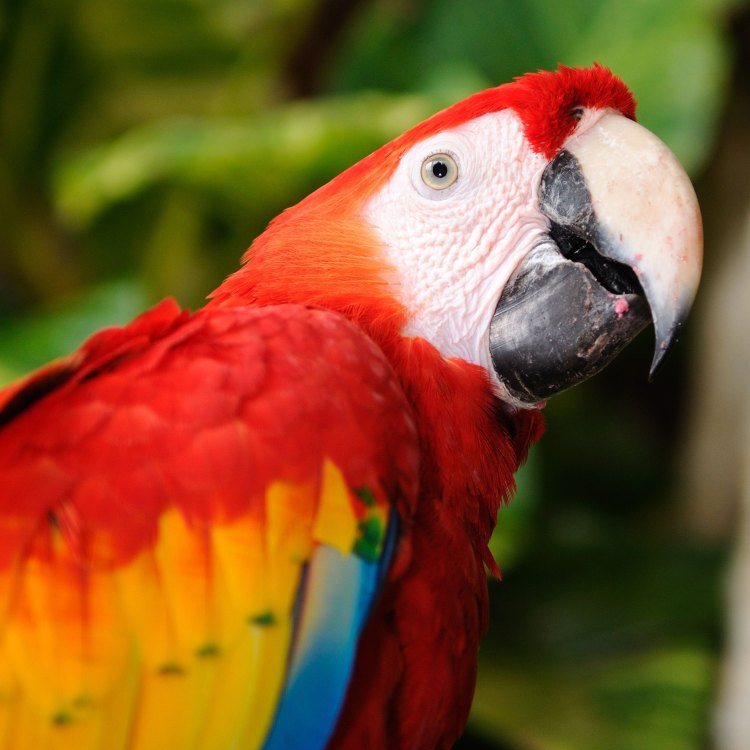
Parrot
- Adult Size: Varies depending on the species, ranging from small parakeets to large macaws
- Average Lifespan: Varies depending on the species, ranging from 10 to 80 years
- Reproduction: Sexual reproduction
- Reproductive Behavior: Monogamous; some species form long-term pair bonds
- Sound or Call: Known for their ability to mimic sounds and human speech
- Migration Pattern: Some species are migratory, while others are resident
- Social Groups: Highly social animals that live in flocks
- Behavior: Intelligent, playful, and curious
- Threats: Habitat loss, illegal pet trade, hunting, and climate change
- Conservation Status: Varies depending on the species, with some being endangered or critically endangered
- Impact on Ecosystem: Important for seed dispersal and pollination in their habitats
- Human Use: Popular as pets, used in entertainment such as performances and shows, and some species are hunted for their feathers and meat
- Distinctive Features: Strong curved beak, zygodactyl feet (two toes pointing forward and two pointing backward), and bright plumage
- Interesting Facts: Parrots are among the most intelligent bird species, with some capable of problem-solving and tool use. They can live for several decades and form strong bonds with their human companions. The African grey parrot is known for its exceptional mimicry skills and ability to learn and understand human language.
- Predator: Predators of parrots include snakes, birds of prey, and mammals such as monkeys and cats.

Psittacidae
The Colorful World of Parrots: Intelligent, Playful, and Curious Birds
Parrots are some of the most recognizable and fascinating creatures found in nature. With their vibrant colors, intelligent personalities, and unique behaviors, these birds have captured the attention and hearts of people all around the world. From small parakeets to large macaws, parrots come in a wide range of sizes and are found in different habitats across the globe. In this article, we will delve into the world of parrots, exploring their physical characteristics, behaviors, and the impact they have on our ecosystem PeaceOfAnimals.Com.ADULT SIZE AND LIFESPAN
One of the most notable features of parrots is their size, which varies depending on the species. While some, like the pygmy parrot, can grow to be as small as 3 inches, others, like the hyacinth macaw, can reach up to 3.3 feet in length. Overall, the size of parrots ranges from small parakeets to large macaws. These birds also come in a variety of colors, with bright and vibrant plumage being a common feature.
Parrots are known for their long lifespans, with some living for up to 80 years in captivity. In the wild, the average lifespan of parrots varies depending on the species, with some living for only 10 years and others for several decades. The exact reason for their long lifespan is not fully understood, but researchers believe it may be due to their low metabolic rate and slow development.
REPRODUCTION AND REPRODUCTIVE BEHAVIOR
Parrots are sexually reproducing animals, meaning they require a mate of the opposite sex to reproduce Patagotitan. Most parrot species are monogamous, forming long-term pair bonds with their chosen mate. This is especially true for larger species such as macaws, who often mate for life and will only find a new partner if their previous mate dies.
The courtship behaviors of parrots vary depending on the species. Some perform elaborate rituals, such as dancing and vocalizing, to attract a mate, while others simply engage in preening and grooming activities. Once a pair has formed, they will work together to build a nest and raise their young.
SOUND AND CALLING ABILITIES
One of the most iconic features of parrots is their ability to mimic sounds and human speech. They have a specialized vocal organ called the syrinx, which allows them to produce a wide range of sounds. Not all parrot species are capable of imitating human speech, but those that do, such as African grey parrots, have become popular pets due to this unique talent.
Parrots use vocalizations for various purposes, including communication, bonding, and warning signals. They often call out loud to locate their flock members, and some species even have specific calls for each member. The calls and sounds of parrots can also differ depending on their mood and emotions.
MIGRATION PATTERNS AND SOCIAL GROUPS
Parrots can be found in various habitats, including tropical forests, grasslands, and savannas. Some species are migratory, meaning they travel long distances seasonally, while others are resident and stay in the same area throughout the year. The reasons for migration are still not fully understood, but researchers believe it may be related to food availability and breeding.
Parrots are highly social animals that live in flocks, ranging from a few individuals to hundreds or even thousands. In the wild, these flocks provide protection and support for each other, and it is not uncommon to see parrots preening and grooming each other. Social interactions also play a vital role in their breeding behavior and the development of young chicks.
BEHAVIOR AND INTELLIGENCE
Parrots are known for their intelligence, playfulness, and curious nature. They have the cognitive abilities to solve problems, use tools, and even understand some concepts of basic math. In the wild, parrots are constantly exploring their surroundings, using their dexterous feet and strong beaks to manipulate objects and gather food.
As highly intelligent animals, parrots require mental stimulation and enrichment to thrive. In captivity, they can develop behavioral issues if not provided with enough mental and physical stimulation. This is why it's essential to understand the specific needs of each parrot species before bringing them into our homes as pets.
THREATS AND CONSERVATION STATUS
Unfortunately, parrots are facing numerous threats in the wild, including habitat loss, illegal pet trade, hunting, and climate change. Due to their beautiful plumage and unique abilities, many parrot species are sought after as pets, resulting in the capture and trade of these birds. This not only harms the individual birds but also impacts their wild populations.
The conservation status of parrots varies depending on the species, with some being endangered or critically endangered. In some areas, conservation efforts have been successful in saving threatened parrot populations, such as the efforts to protect the blue-throated macaw in Bolivia. However, there is still much work to be done to preserve the diverse and vibrant world of parrots.
IMPACT ON ECOSYSTEM
Parrots play a crucial role in their ecosystem through seed dispersal and pollination. As they feed on a variety of fruits and nuts, they help spread the seeds of plants to different locations, aiding in the growth and regeneration of their habitats. Some parrot species are also important pollinators, transferring pollen from one flower to another as they feed, ensuring the continuation of plant species.
HUMAN USE AND DISTINCTIVE FEATURES
Humans have had a long history with parrots, using them for various purposes. They have been popular pets for centuries, with ancient civilizations such as the Greeks and Romans keeping them in captivity. Parrots are also used in entertainment, such as performances and shows, due to their ability to mimic sounds and perform tricks.
Furthermore, some parrot species are hunted for their feathers and meat. This, combined with habitat loss and other threats, has led to a decline in their wild populations in some areas. Parrots are also used in scientific research, as their intelligence and social behaviors make them excellent subjects for studying animal cognition.
Parrots are easily identified by their distinctive features, such as their strong curved beak, zygodactyl feet (two toes pointing forward and two pointing backward), and bright plumage. These features are not only for aesthetic purposes but serve various functions for the birds, such as cracking open nuts and climbing trees.
INTERESTING FACTS AND PREDATORS
As we have seen, parrots are fascinating creatures, and their uniqueness doesn't stop there. Here are some interesting facts about parrots that you may not know:
- Parrots are among the most intelligent bird species, with some capable of problem-solving and tool use.
- The kea parrot of New Zealand is the only known alpine parrot, living in the mountains and even skiing on the snow for fun.
- Parrots have a specialized gland that produces powder down, a fine powder that helps to keep their feathers clean and healthy.
- The African grey parrot is known for its exceptional mimicry skills and ability to learn and understand human language. One famous African grey parrot, Alex, was able to count, understand concepts of color and shapes, and even form simple sentences.
Parrots have a few natural predators, including snakes, birds of prey, and mammals such as monkeys and cats. In the wild, parrots use their intelligence and social behaviors to protect themselves and their flock from these predators.
FINAL THOUGHTS
In conclusion, parrots are extraordinary creatures, full of color, intelligence, and unique behaviors. From their diverse sizes and lifespans to their reproductive and social behaviors, parrots have captured the interest and admiration of humans for thousands of years. As we continue to learn more about these birds, it becomes increasingly important to protect and preserve their habitats and wild populations, ensuring that the world will continue to be graced with the presence of these beautiful and fascinating creatures.
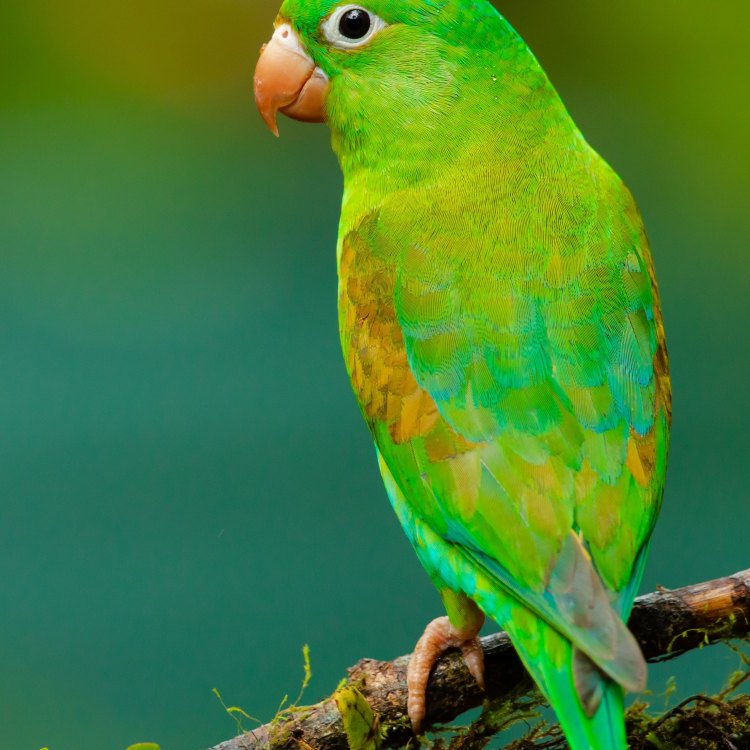
The Fascinating World of Parrots: Colorful Birds with Incredible Intelligence
Disclaimer: The content provided is for informational purposes only. We cannot guarantee the accuracy of the information on this page 100%. All information provided here may change without prior notice.

